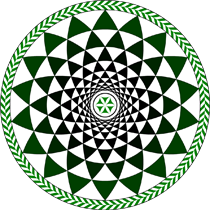Speaker
Prof.
Jun Yamamoto
(Department of Physics, Kyoto University)
Description
`We have invented the principle of slippery interfaces and design low voltage driven fast switching liquid crytal display cell. The ancohring force on the glass surfaces of the cell diminishes to lubricate the rotational motion of LC molecules. We have succeeded to demonstrate the large reduction of driving voltage in DH-FLC mode of SmC$^\ast$ keeping the fast switching response. The slippery interfaces can be realized by the spin coated swollen azo-LC gel films on the glass substrates. Under UV irradiation, trans-cis isomerization of the azo-dye co-polymerized in the azo-LC gel film, induces the slippery intefaces by the disordering effect. Since the co-polymerized azo-dye cannot be dissolved into LC, the disordering effect is complitely localized in the inteface between swollen azo-LC gel and bulk SmC$^\ast$ material.`
`By lubrication of the motion of the C-director rotation on the slippery interface, two types of C-director rotation modes appear. Relxation frequecies of both mode are strongly dependent on the applied electric field. One is the intra helix motion which is quite fast, (~50 micro sec), but it requires rather large driving voltage (>1.5V/micoro meter) and induces small transmitted light intensity ($\Delta I/I<0.5$). Interhelix motion can be enhanced by the slippery interfaces, which is rather slow response (>1 ms), but it is easy to be excited by the low driving voltage (<1.0 V/micro meter) and creates the large transmitted light intensity ($\Delta I/I>0.75$). Then, the inter helix mode is quite effective to reduce the driving voltage of DH-FLC mode.`
Author
Prof.
Jun Yamamoto
(Department of Physics, Kyoto University)

